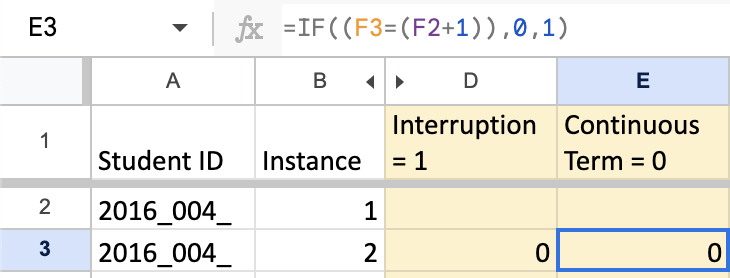Findings
In Figure 1 we see the percent of Hartford Promise students who earned degrees in relation to whether or not they are interrupted or uninterrupted degree candidates. As the chart shows, the data is greatly skewed to favor the uninterrupted students, 59 percent of those who started their degree ended up finishing it, compared to 2 percent of interrupted students who finished their degree.
Figure 1. The Difference in Graduation Rates Among Interrupted Versus Uninterrupted Hartford Prokmise Students
This figure is significant because it demonstrates that if a student from the Hartford Promise program takes time off from college this statistically severely diminishes their probability of graduating.
Figure 2 shows the racial/ethnic difference in interruption rate, with Asian students in the aggregate having an interruption rate of 18 percent, Black students having an interruption rate of 21 percent, Hispanic students having an interruption rate of 17 percent, and White students having an interruption rate of 0 percent. A similar principle is mobilized in this section as occurred in Figure 1, namely the notion that these percentages do not mean that, for example, 18 percent of all Asian students were interrupted in their degree attempt, since some students often were interrupted multiple times.
Figure 2. The Interruption Rates Among Black, Asian, Hispanic, and White Hartford Promise Students.
This information may be significant to Hartford Promise so they can tailor their scholarship program to support different cohorts of the population in order to ensure that there is greater parity among interruption rates with respect to different racial/ethnic backgrounds.
In Figure 3, we see that when comparing interruptions by gender, we found female students experienced a 22 percent interruption rate gap compared with 17 percent of Hartford Promise male students.On the other hand, we see that interruptions among Hartford Promise students occurred slightly less among men, at a rate of 17 percent of the 76 total men in the study. It is important to know that there are students in the data set who had multiple interruptions, so this data show not be construed as saying that 22 percent of the women had interruptions. For example, Student 2016_062 took time off after their 2020 fall semester, not returning to college until Fall 2021, and then this student also experienced an interruption after the Spring 2022 semester, not enrolling in college until Spring 2023. Similarly, student 2016_085 took time off after the Fall 2018 semester, returning to college in Fall 2020, and then took time off in Spring 2021, returning to college in Fall of 2022.
Figure 3. The Interruption Rates Among Men and Women in the Hartford Promise Data.
We see this data reflecting that there is only a modest difference in interruption frequency among genders in the Hartford Promise program, which in many ways defies conventional wisdom since women tend to have more success academically than men in grades K-12 as represented by grade point average (Damour; Gnaulati). One would traditionally think that the interruption rate would be higher among men in the Hartford Promise data set, but it is actually higher among women in the Hartford Promise data set, as this data shows.
These findings are significant because although there is only a slight difference between interruption percentages among these two genders, Hartford Promise may find it valuable to know about this slight discrepancy so that they can build a network of proactive support to ensure that the interruption percentage among women more closely aligns with that of men.

